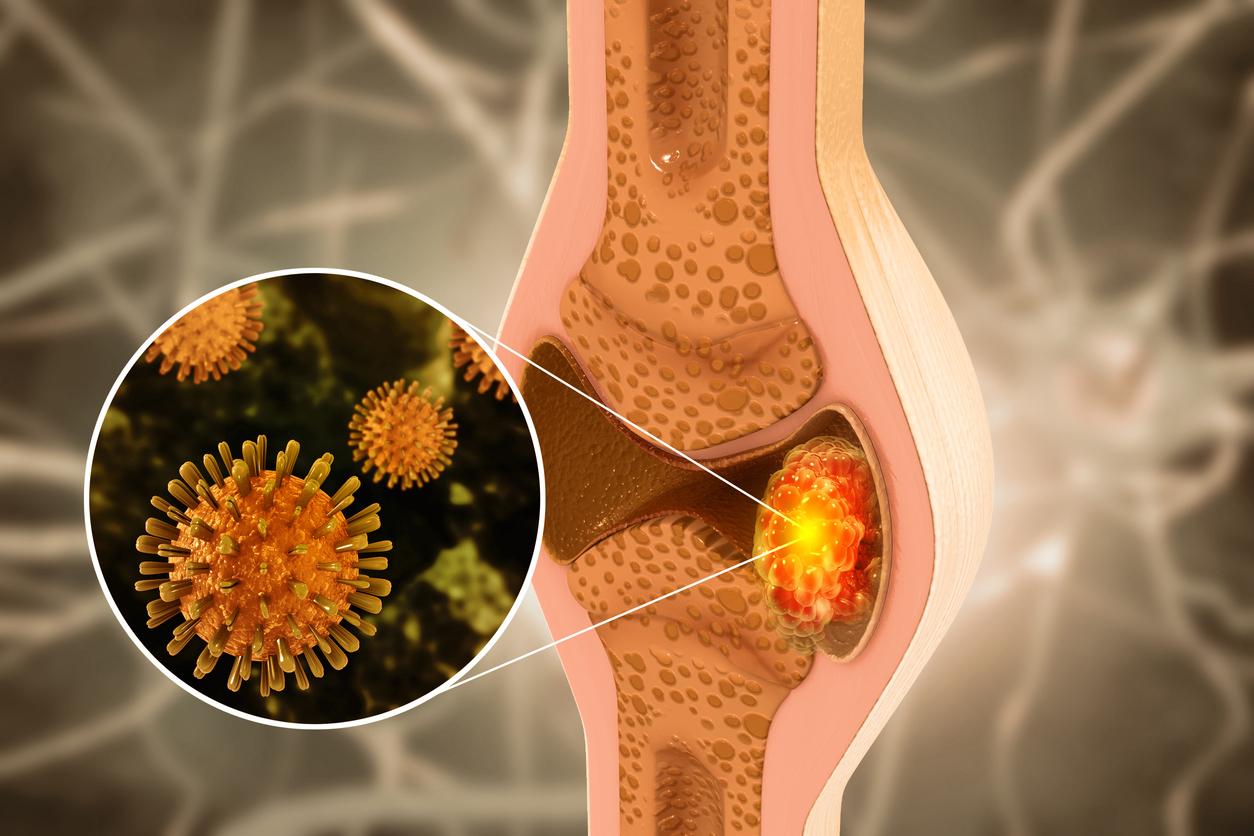Some symptoms, such as white and yellow bumps near the eyelids or a blue, white, or light gray ring around the colored part of the iris, are found in people with cholesterol.

- Nearly 20% of the adult population has excess cholesterol in their blood.
- Symptoms of high cholesterol may be visible in the eyes.
- These are white and yellow bumps near the eyelids or nose or a blue, white, or light gray ring around the iris.
Hypercholesterolemia, characterized by high levels of cholesterol in the blood, is a common health problem that affects about 20% of the adult population, according to the French Federation of Cardiology. Many factors can contribute to this condition, such as diet, sedentary lifestyle and family history. To detect this excess cholesterol, we take a blood test on an empty stomach. It is recommended from the age of 50 to do a dosage every five years for women and every three years for men. But we can detect the disease differently.
Eye signs of high cholesterol
“If you have white or yellow bumps near your eyelids or nose, it could be a sign of high cholesterolexplains Dr. Rachel to Mirror. These are called xanthelasma deposits and may indicate that you have high cholesterol.” According to MSD manualit is not necessary to treat these plaques, however some patients have them removed for aesthetic reasons.
Cholesterol can also be detected by the formation of a blue, white or light gray ring around the iris, the colored part of the eye. This phenomenon is called senile arcus. When he “occurs in older people, it is not linked to high cholesterol levels, can we read on the website of the Mayo Clinic. However, the formation of an arc or ring around the iris in younger people is sometimes a sign of severe cases of high cholesterol.”

The role of good and bad cholesterol
Cholesterol is a lipid circulating in the blood, essential to the body. Two proteins are responsible for its transport in the body: high-density lipoproteins (HDL), which correspond to good cholesterol, and low-density lipoproteins (LDL), for bad cholesterol. HDL prevents the formation of plaques on the walls of the arteries and brings excess cholesterol accumulated in the organs to the liver so that it can be eliminated. On the other hand, LDL distributes excess cholesterol to the different organs, which promotes lipid deposition on the wall of the arteries and therefore the appearance of plaques and therefore an increased risk of heart disease.
High levels of LDL cholesterol and low levels of HDL cholesterol are indicators of an imbalance in cholesterol metabolism and may increase the risk of complications related to high cholesterol. It is therefore essential to maintain a balance between these two types of cholesterol to preserve your health.
A balanced diet (few cold meats, cheeses, butter and sugary products), regular physical activity and, if necessary, medications prescribed by a healthcare professional can help maintain healthy cholesterol levels and reduce risk of cardiovascular complications linked to hypercholesterolemia.
















